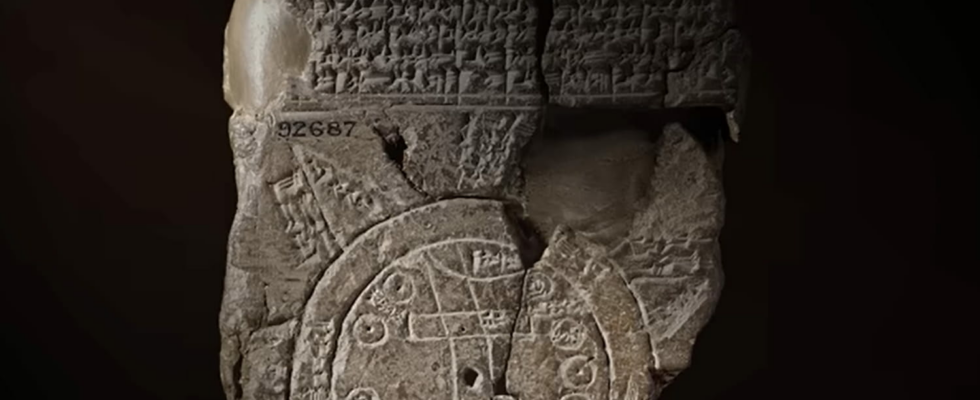How was the world represented almost 3000 years ago? This card gives a surprising answer.
Discovered in 1882 in Sippar in Iraq and kept in the British Museum, the Imago Mundi map is the oldest map in the world. It is almost 3000 years old and is engraved on a Babylonian clay tablet. It is marked by characteristic designs of cuneiform, an ancient writing system. Its author remains unknown. Recently, new research was carried out on the map to decipher it further and the results were reported in a video from the Museum of London.
It offers a unique insight into the Babylonians’ perception of the world. It is represented in the form of a disc with Mesopotamia in the center, which corresponds to modern-day Iraq. The Euphrates River runs from north to south and is surrounded by cities and regions, highlighted by small circles, such as Babylon, Assyria, Der and Urartu. A double circular strip, referred to as the “bitter river”, then marks the separation between their territory and the unknown lands. “This circular diagram encapsulates the entire known world in which people lived, thrived and died,” Dr. Irving Finkel, a cuneiform specialist at the British Museum, said in the video.

The ends of the map are marked with triangular symbols, which indicate unexplored regions. They are associated with legends, inscribed on the back of the tablet and beginning with a similar sentence: “From the Bitter River, you must travel [six ou huit] leagues to reach…”. One of them relates the story of a flood, similar to the story of Noah’s ark. The text even suggests where the wreck of the ark is located, which would be visible by climbing a mountain Another evokes the legend of the place “where the sun is not visible”, relating to the mythical journey of Gilgamesh towards lands of perpetual darkness The creation of the world by the Babylonian god. Marduk is also narrated.
According to Dr. Irving Finkel, there are also references to mythological creatures, such as the Scorpion Man, which are associated with territories beyond the physical boundary. The Babylonian vision of the world therefore revolved around numerous beliefs and mysteries. The map could reveal even more secrets but as Dr Finkel points out, this will still take a lot of time.
